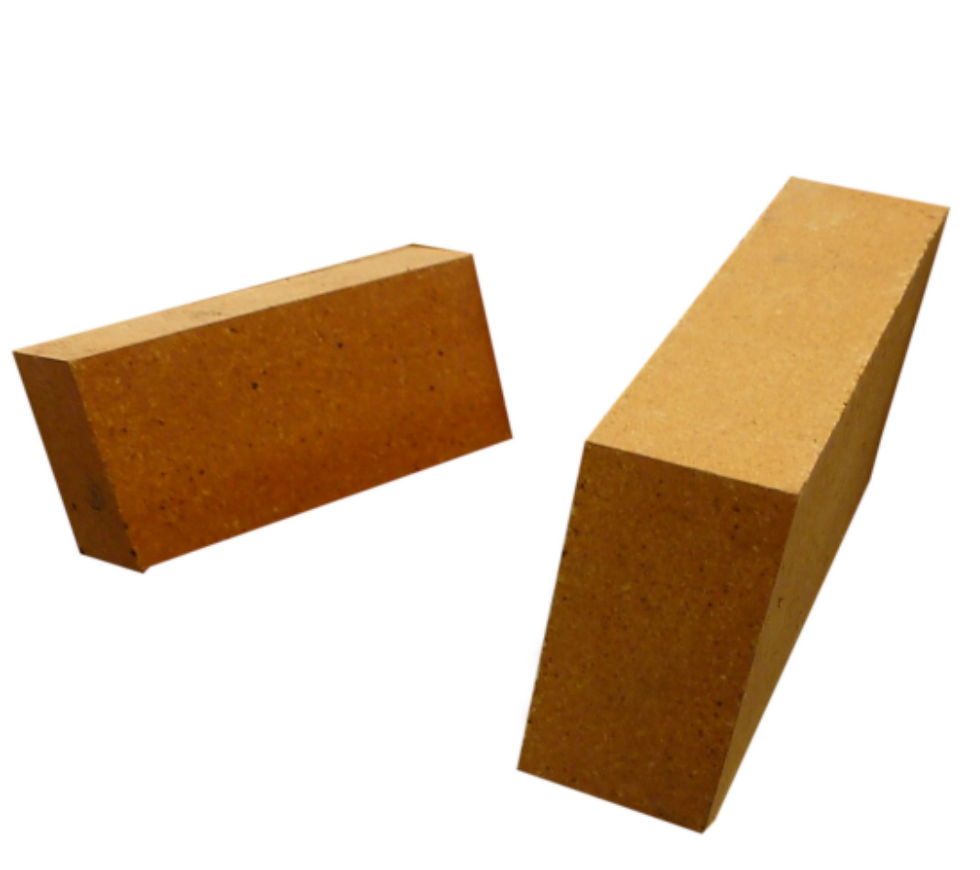Buy good quality Fire Brick Material at low price made in India and China at Wedge. We assure high performance guarantee and offer complete solution supply & installation on Total Refractory management basis at lowest possible cost matching to your SOPs.
Fire bricks, also known as refractory bricks or heat-resistant bricks, are specialized bricks designed to withstand high temperatures and harsh conditions. They are commonly used in applications where regular bricks or other materials would not survive due to extreme heat, thermal shock, or chemical exposure. Here are some key points about fire brick materials:
Composition: Fire bricks are typically made from refractory ceramic materials that can withstand high temperatures. The primary components of fire bricks include:
Fireclay: A type of clay rich in alumina and silica, providing good heat resistance.
Silica: Pure silica (SiO2) or silica mixed with other materials, offering high-temperature stability and resistance to thermal shock.
Alumina (Al2O3): Adds strength and refractoriness to the bricks, allowing them to withstand intense heat.
Types of Fire Bricks:
Insulating Fire Bricks (IFBs): Lightweight bricks with low thermal conductivity, used for insulation in furnaces, kilns, and fireplaces.
Dense Fire Bricks: High-density bricks with excellent strength and resistance to abrasion, suitable for high-temperature applications like foundries and steelmaking.
Acid-Resistant Bricks: Made from silica or special alumina-silicate materials, these bricks resist acidic environments and are used in chemical processing industries.
Basic Bricks: Made from magnesia or dolomite, these bricks are resistant to basic (alkaline) environments and are used in steelmaking and cement kilns.
Properties: Fire bricks exhibit several important properties that make them suitable for high-temperature applications:
High heat resistance: Fire bricks can withstand temperatures ranging from several hundred degrees Celsius to over 1700°C, depending on the composition and type.
Thermal conductivity: Depending on the type, fire bricks can have low thermal conductivity, providing insulation and reducing heat loss in kilns, furnaces, and ovens.
Thermal shock resistance: Fire bricks can withstand rapid temperature changes without cracking or spalling, crucial for applications involving thermal cycling.
Chemical resistance: Some fire bricks are resistant to chemical corrosion from molten metals, slags, acids, and alkalis, making them suitable for harsh industrial environments.
Applications: Fire bricks find wide application in various industries and settings, including:
Furnaces and kilns: Lining materials for industrial furnaces, kilns, and ovens in industries such as steelmaking, ceramics, glass manufacturing, and metal forging.
Fireplaces and chimneys: Construction materials for residential and commercial fireplaces, chimneys, and wood-burning stoves.
Foundries: Crucibles, ladles, and molds in foundries use fire bricks to withstand molten metal temperatures during casting and forging processes.
High-temperature insulation: Insulating fire bricks are used as thermal insulation in industrial equipment, boilers, and thermal processing units.
Fire brick materials are essential components in industries and applications requiring heat resistance, thermal insulation, and durability under extreme conditions. Their diverse compositions and properties make them suitable for a wide range of high-temperature environments, providing protection and longevity to industrial equipment and structures.
Fire Brick Material
Get Quote / Price
Get Quote / Technical Specs
At we manufacture, source, and supply wide range of Refractory Bricks and Insulation Materials for High Temperature Applications. To learn more about Refractory Bricks please visit the following page Link
- Fireclay Insulation Bricks
- High Alumina Insulation Bricks
- Silica Insulation Bricks
- Mullite Insulation Bricks
- Alumina-Chromite Bricks
- Carbon-Bonded Chromite Bricks
- Direct-Bonded Chromite Bricks
- High Purity Magnesia Carbon Bricks
- Low Carbon Magnesia Carbon Bricks
- Corundum Bricks
- Silica-Bonded Alumina Bricks
- Calcium Silicate Insulation Bricks
- Zirconia Insulation Bricks
- Alumina-Silicon Carbide Bricks
- Andalusite Alumina Bricks
- Dense Silica Bricks
- Acid-Resistant Silica Bricks
- Diatomite Insulation Bricks
- Vermiculite Insulation Bricks
- Fused Silica Bricks
- Alumina-Magnesia Carbon Bricks
- Spinel-Magnesia Carbon Bricks
- Nano-Composite Magnesia Carbon Bricks
- Direct-Bonded Magnesite Bricks
- Fused-Bonded Magnesite Bricks:
- Chemically Bonded Magnesite Bricks
- Carbon-Bonded Magnesite Bricks
- Spinel-Bonded Magnesite Bricks
- Magnesia-Chrome Bricks
Get Price
Click here to send enquiry and get best price for your location.
































